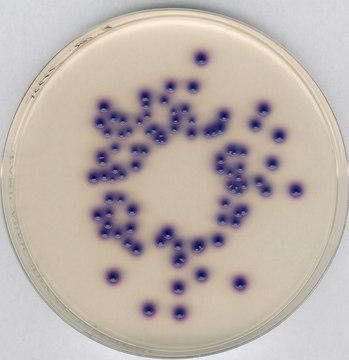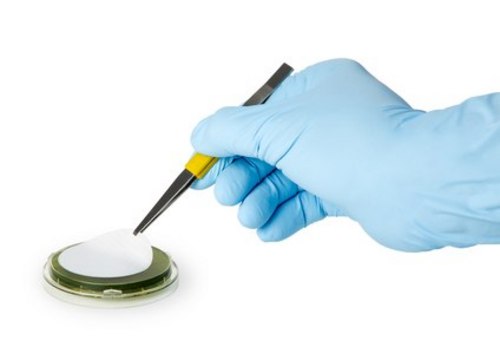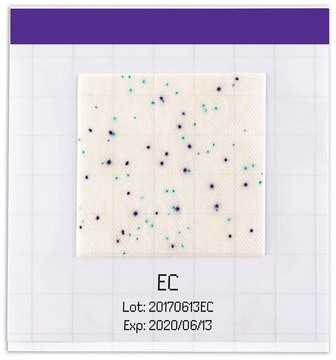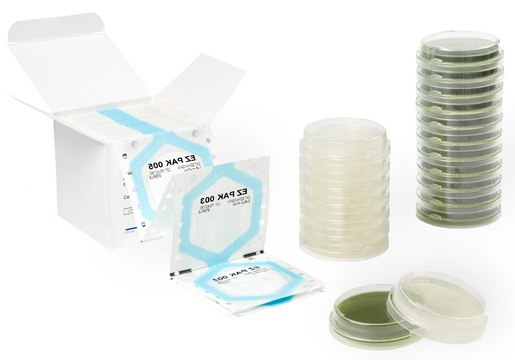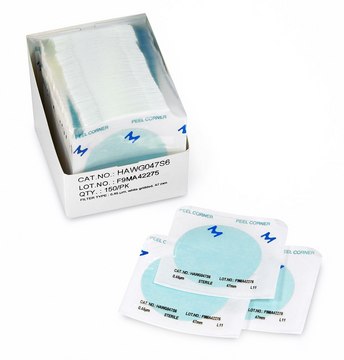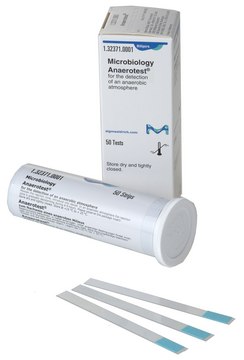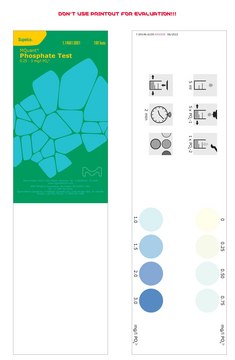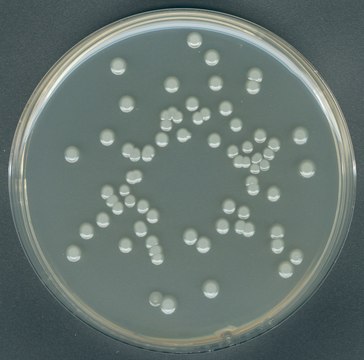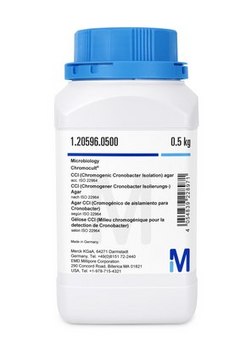1.46689
ReadyPlate™ Chromocult® Coliform Agar
To detect Escherichia coli and coliform bacteria, plate diam. 90 mm, box of 20 plates
Sign Into View Organizational & Contract Pricing
All Photos(1)
About This Item
UNSPSC Code:
41106217
NACRES:
NA.74
Recommended Products
Agency
ISO 9308
Quality Level
sterility
sterile
form
plate (ready-to-use)
feature
ready-to-use
packaging
box of 20 plates
manufacturer/tradename
ReadyPlate™
plate diam.
90 mm
application(s)
food and beverages
microbiology
water monitoring
storage temp.
15-25°C
suitability
Escherichia coli
coliforms
General description
ReadyPlate™ agar plates are stackable specially designed plates that helps increase the safety during handling, transport and incubation. ReadyPlate™ agar plates are of standard 90mm diameter. Chromocult® Coliform Agar (CCA) is a selective and differential chromogenic culture medium. It is a standard medium in water testing for simultaneous detection and enumeration of coliform and E.coli. It is also the base medium recommended for testing drinking water as per ISO 9309-1:2014
Application
Chromocult® Coliform Agar is used for the enumeration of Escherichia coli and coliform bacteria in food and drinking water, disinfected pool water and finished water from treatment plants
Analysis Note
The interaction of selected peptones, pyruvate, sorbitol and phosphate buffer promotes rapid colony growth, even for sub-lethally injured coliform bacteria. The growth of Gram-positive bacteria as well as certain Gram-negative bacteria is inhibited by the presence of Tergitol™ 7 which has no negative effect on the growth of coliform bacteria. Further, the combination of two chromogenic substrates permits the simultaneous detection of coliform bacteria and E. coli.
Coliform bacteria detection: The substrate Salmon-GAL is used for the detection of β-D-galactosidase activity, which is characteristic for coliform bacteria. This interaction results in a pink to red color of the coliform colonies.
E. coli detection: The substrate X-glucuronide is used for the detection of β-D-glucuronidase activity. E. coli cleaves both Salmon-GAL and X-glucuronide, so that positive colonies take on a dark-blue to violet color. These are easily distinguished from other coliform colonies, which have a pink to red color. Some E. coli (3-4%) are ß-D-glucuronidase-negative and appear as pink to red colonies.
Accompanying flora appears as colorless colonies, except for some organisms, which possess β-D glucuronidase activity. These colonies appear light blue to turquoise in color.
Coliform bacteria detection: The substrate Salmon-GAL is used for the detection of β-D-galactosidase activity, which is characteristic for coliform bacteria. This interaction results in a pink to red color of the coliform colonies.
E. coli detection: The substrate X-glucuronide is used for the detection of β-D-glucuronidase activity. E. coli cleaves both Salmon-GAL and X-glucuronide, so that positive colonies take on a dark-blue to violet color. These are easily distinguished from other coliform colonies, which have a pink to red color. Some E. coli (3-4%) are ß-D-glucuronidase-negative and appear as pink to red colonies.
Accompanying flora appears as colorless colonies, except for some organisms, which possess β-D glucuronidase activity. These colonies appear light blue to turquoise in color.
Legal Information
CHROMOCULT is a registered trademark of Merck KGaA, Darmstadt, Germany
READYPLATE is a trademark of Merck KGaA, Darmstadt, Germany
TERGITOL is a trademark of The Dow Chemical Company ("Dow") or an affiliated company of Dow
Storage Class Code
13 - Non Combustible Solids
WGK
WGK 2
Flash Point(F)
Not applicable
Flash Point(C)
Not applicable
Regulatory Information
新产品
Certificates of Analysis (COA)
Search for Certificates of Analysis (COA) by entering the products Lot/Batch Number. Lot and Batch Numbers can be found on a product’s label following the words ‘Lot’ or ‘Batch’.
Already Own This Product?
Find documentation for the products that you have recently purchased in the Document Library.
Our team of scientists has experience in all areas of research including Life Science, Material Science, Chemical Synthesis, Chromatography, Analytical and many others.
Contact Technical Service